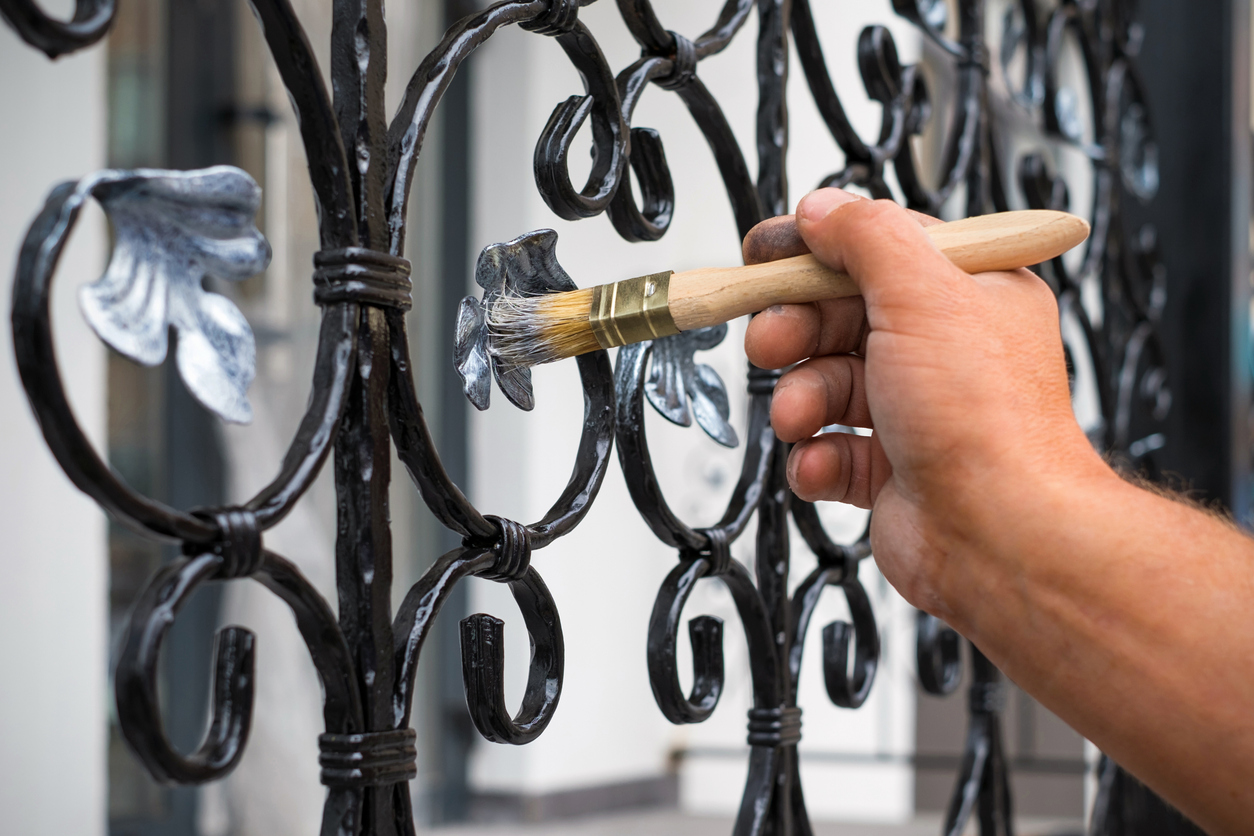
Project overview
In any DIY job, the prep is just as important as the painting. And that’s especially true when it comes to metal.
Because of the slippery smooth surface, metal needs the correct prep and application if you’re going to get the paint to stick.
Here are our top tips for preparing metal for painting.
How to degrease metal before painting
Grease makes an already slippery surface even slippery. If you try painting over it, the paint will be patchy (if it even manages to stick!) and will be much more likely to flake off.
There are a few ways you can degrease metal.
Sugar soap is a secret weapon when it comes to prep. It cuts through grease and makes the clean up incredibly easy. All you need to do is spray on the sugar soap, scrub it with a sponge and then use clean water to wash it off and get rid of the residues.
The other option is to use a household cleaner with a degreasing agent. Again it’s essential you properly wash off the residues, or this could leave you with a patchy finish.
You can also buy a heavy-duty degreaser, which can be helpful if you’re preparing a garage door or a big expanse of metal.
Or you can use vinegar. Just soak a rag and wipe it over the grease.
Even if the metal isn’t greasy, it still needs to be cleaned.
Clean the metal and get rid of all dirt, dust and grime.
Sanding metal
After the metal is clean, it needs sanding.
Sanding helps create a rough surface. Painted metal which isn’t sanded will be more prone to peel or flake off.
If you’re prepping metal that’s already painted, you need to sand off and smooth. Use 120 grit sandpaper to get rid of any damaged paint.
For painted metal where the paint is in good condition, use 240 grit sandpaper to roughen the surface.
You can rub bare metal with 120 grit sandpaper.
If there’s any rust on the metal, use a wire brush or sandpaper. Get rid of as much rust as you can, ensuring the surface is as level as possible. While specialist paint will stop the metal from rusting further, you might still have textured sections where you can feel the rust.
Priming metal for painting
By now, you’ve probably got the gist that getting the paint to stick to metal can be difficult, so it shouldn’t come as a surprise that primer is essential.
Our Direct to Metal paint doesn’t need a primer and can be painted straight on after you’ve prepped.
But not all, so check the instructions to see if you need a separate one.
Stir the primer and use a paintbrush to apply it in long strokes. Don’t apply the paint too thickly and work in the same direction. If you’re painting a garage door, paint the flat surfaces first before filling in any grooves.
For garden furniture, paint any intricate details first with a fine brush, then move onto other areas.
Let the primer dry, and now you’re ready to paint!
We’ve made that easy for you too, with our guide to painting metal.
